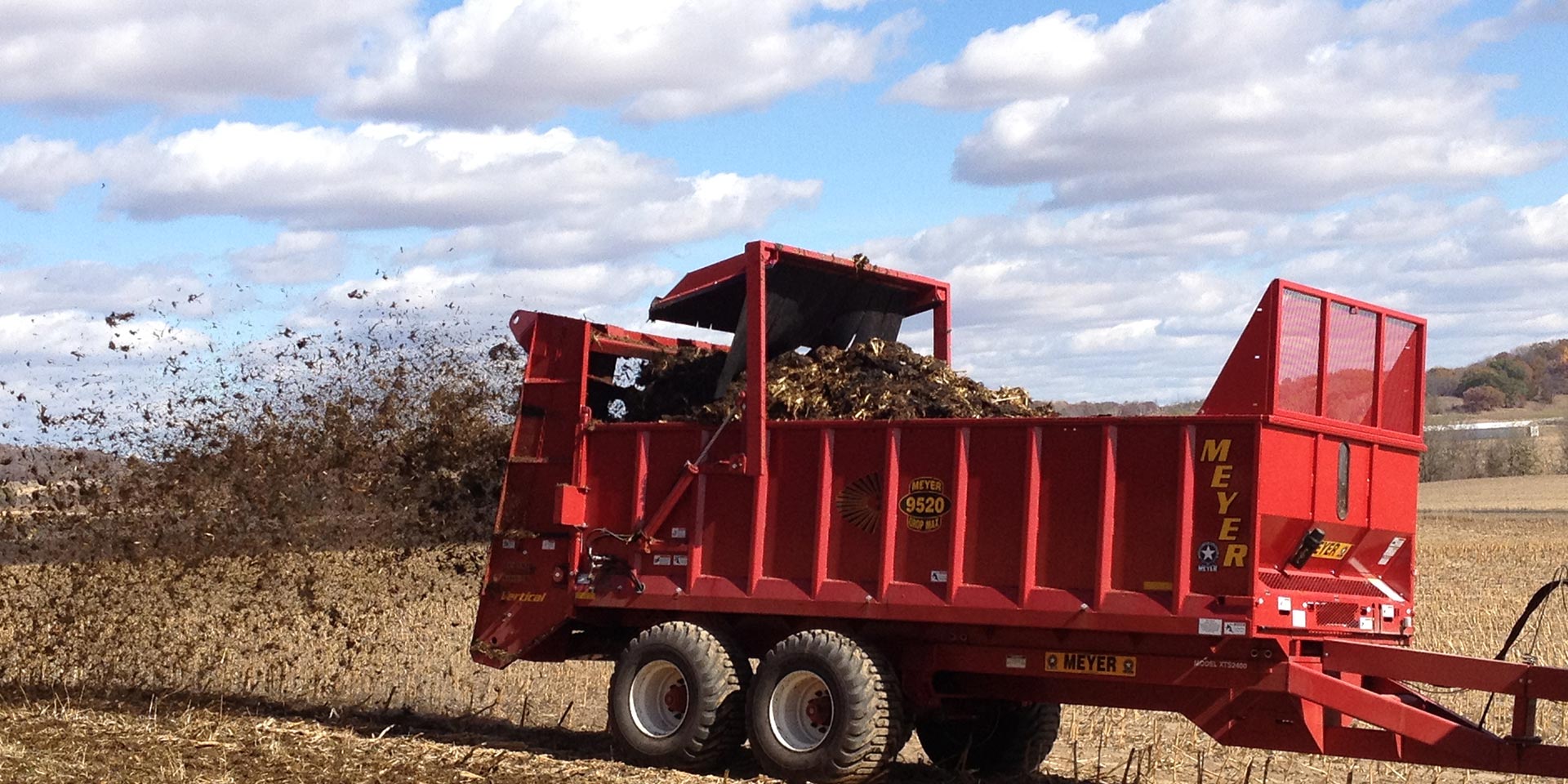Adoption of advanced application technology is providing an economic alternative to costly commercial fertilizers, while also organically building soil biology.
It’s often said, farmers can’t manage what they don’t measure. The inability to do either on a consistent, accurate basis has made it difficult to consistently quantify the economic and biological benefits of applied manure.
But recent advancements in dry spreading technology is allowing growers to precisely capture and calculate the value of manure as a cost-effective nutrient source that organically strengthens the soil.
While dry rate control is a mature technology to apply supplemental sources of nitrogen (N), phosphorus (P) and potassium (K), return on investment is becoming more definable with the ability to create as-applied maps, track and record load weight and execute variable-rate manure spreading prescriptions.
“Manure application is an imperfect science,” says Eric Richer, agriculture and natural resources assistant professor at Ohio State University. “Advancements in technology will resonate with farmers who understand the nutrient value of manure and the logistical needs of applying it where it’s needed. There’s real potential.”
Economic Incentive
For years, Jim Palmer, who farms with his son, Mitchell, had as much as 3,000 tons of dry manure delivered and custom spread across their 2,000-acre primarily irrigated corn and soybeans operation in Elm Creek, Nebraska. Grid samples taken every four years hinted at the biological benefits of manure, but cursory, if any reliable information on load weights or application rates made it difficult for the Palmers to consider reducing their annual investment in commercial fertilizer.
But they also couldn't justify spending $120-$140 per acre to have manure delivered and inconsistently spread at 25 tons per acre across 200-300 acres without confirmation that what they paid for was what they got.
“There could be as much as a 5-10 ton variance between what we wanted applied and what actually went into the field,” Jim says. “If we were 10 tons long, we know we didn’t get enough applied where we wanted it, let alone the pass-to-pass consistency.”
In 2019, the Palmers invested in their own spreader, a 950 Tubeline, and also added the Topcon Athene SL2 system, which combines dry rate control with load cells that provide real-time product weight readings, on-the-go calibrations and as-applied maps. They run the system through a John Deere 2630 display in one of their three Deere 8R series tractors that pulls the spreader 6-7 miles per hour through the field. They are rotating manure applications, covering approximately 500-acre sections of the farm every four years.
In addition to reducing spreading costs by almost 50% to $70-$80 per acre, the Palmers are stretching their commercial fertilizer investment further than ever. Jim estimates they are annually saving at least $100 per acre in dry fertilizer costs and over the course of 4 years, will save $300-$400 per acre in commercial fertilizer expenses alone to maintain the same nutrient levels in fields they spread manure.
“The price of fertilizer is always going to go up,” Mitchell says. “But when we look at soil test results that show a field is low in phosphorus, it’s a relief knowing we’ll be able to elevate those levels with a targeted manure application. We don’t have to worry about a huge commercial fertilizer bill for the next 3 years to get those nutrient levels where we want them to be.”
The Palmers have been building soil biology through years of manure spreading, but even a first-year application on low-CEC soils can produce a positive impact on yield. Early results of an ongoing Ohio State fertility study (Meeting Tri-State Fertility Needs, 2021 eFields On-Farm Research Report p. 96-97) comparing the effect of three different, but equally-applied sources of N, P and K on corn yield, showed that fields spread with manure out-produced those with compost and commercial fertilizer.
Test sites spread with a flat rate of manure by a Kuhn Knight ProTwin Slinger, yielded 213 bushels per acre, compared to 202 for compost-applied fields and 190 for those with commercial fertilizer. Each of the test plots part of the 2021 trials received the target 2-year crop removal rates of N, P and K, based on Tri-State fertility needs for corn.
The fields recorded 1.7% organic matter content and 4.4 CEC, according to Richer, who is leading the research project funded through a three-year grant. Baseline data was collected from three different locations and participating growers were asked to weigh in and weigh out their manure and for permission to pull samples every week.
“We more than doubled the nutrient density for phosphorus, potassium, sulfur and in our case, calcium, with composted manure, and preliminary results support manure as a viable nutrient replacement to commercial fertilizers,” Richer says. “Perhaps we can hang the yield benefit of manure on the prolonged availability of nutrients throughout the growing season.”
Aside from the use of auto-steer in two of the trials, no other precision technology was part of the 2021 research, and Richer acknowledges the enhanced benefits that modern spreading systems can provide, especially when applying different types of manure.
“Three out of the five growers we worked with had sawdust-based manure and two had straw-based manure,” Richer says. “The straw runs through the spreader pretty rough, so having the ability to vary the rate is something that would improve the consistency of that coverage in the field.”
















